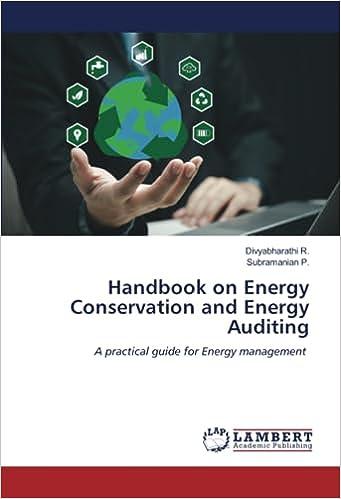Question
LIFO Perpetual Inventory The beginning inventory at Dunne Co. and data on purchases and sales for a three-month period are as follows: Date Transaction Number
-
LIFO Perpetual Inventory
The beginning inventory at Dunne Co. and data on purchases and sales for a three-month period are as follows:
Date Transaction Number of Units Per Unit Total Apr. 3 Inventory 90 $525 $47,250 8 Purchase 180 630 113,400 11 Sale 121 1,750 211,750 30 Sale 76 1,750 133,000 May 8 Purchase 150 700 105,000 10 Sale 90 1,750 157,500 19 Sale 45 1,750 78,750 28 Purchase 150 770 115,500 June 5 Sale 90 1,840 165,600 16 Sale 120 1,840 220,800 21 Purchase 270 840 226,800 28 Sale 135 1,840 248,400 Required:
1. Record the inventory, purchases, and cost of goods sold data in a perpetual inventory record similar to the one illustrated in Exhibit 3, using the last-in, first-out method. Under LIFO, if units are in inventory at two different costs, enter the units with the HIGHER unit cost first in the Cost of Goods Sold Unit Cost column and LOWER unit cost first in the Inventory Unit Cost column.
Dunne Co. Schedule of Cost of Goods Sold LIFO Method For the Three Months Ended June 30 Purchases Cost of Goods Sold Inventory Date Quantity Unit Cost Total Cost Quantity Unit Cost Total Cost Quantity Unit Cost Total Cost Apr. 3 fill in the blank 1 $fill in the blank 2 $fill in the blank 3 Apr. 8 fill in the blank 4 $fill in the blank 5 $fill in the blank 6 fill in the blank 7 fill in the blank 8 fill in the blank 9 fill in the blank 10 fill in the blank 11 fill in the blank 12 Apr. 11 fill in the blank 13 $fill in the blank 14 $fill in the blank 15 fill in the blank 16 fill in the blank 17 fill in the blank 18 fill in the blank 19 fill in the blank 20 fill in the blank 21 Apr. 30 fill in the blank 22 fill in the blank 23 fill in the blank 24 fill in the blank 25 fill in the blank 26 fill in the blank 27 fill in the blank 28 fill in the blank 29 fill in the blank 30 May 8 fill in the blank 31 fill in the blank 32 fill in the blank 33 fill in the blank 34 fill in the blank 35 fill in the blank 36 fill in the blank 37 fill in the blank 38 fill in the blank 39 May 10 fill in the blank 40 fill in the blank 41 fill in the blank 42 fill in the blank 43 fill in the blank 44 fill in the blank 45 fill in the blank 46 fill in the blank 47 fill in the blank 48 May 19 fill in the blank 49 fill in the blank 50 fill in the blank 51 fill in the blank 52 fill in the blank 53 fill in the blank 54 fill in the blank 55 fill in the blank 56 fill in the blank 57 May 28 fill in the blank 58 fill in the blank 59 fill in the blank 60 fill in the blank 61 fill in the blank 62 fill in the blank 63 fill in the blank 64 fill in the blank 65 fill in the blank 66 fill in the blank 67 fill in the blank 68 fill in the blank 69 June 5 fill in the blank 70 fill in the blank 71 fill in the blank 72 fill in the blank 73 fill in the blank 74 fill in the blank 75 fill in the blank 76 fill in the blank 77 fill in the blank 78 fill in the blank 79 fill in the blank 80 fill in the blank 81 June 16 fill in the blank 82 fill in the blank 83 fill in the blank 84 fill in the blank 85 fill in the blank 86 fill in the blank 87 fill in the blank 88 fill in the blank 89 fill in the blank 90 fill in the blank 91 fill in the blank 92 fill in the blank 93 June 21 fill in the blank 94 fill in the blank 95 fill in the blank 96 fill in the blank 97 fill in the blank 98 fill in the blank 99 fill in the blank 100 fill in the blank 101 fill in the blank 102 June 28 fill in the blank 103 fill in the blank 104 fill in the blank 105 fill in the blank 106 fill in the blank 107 fill in the blank 108 fill in the blank 109 fill in the blank 110 fill in the blank 111 June 30 Balances $fill in the blank 112 $fill in the blank 113 2. Determine the total sales, the total cost of goods sold, and the gross profit from sales for the period.
Total sales $fill in the blank 114 Total cost of goods sold $fill in the blank 115 Gross profit from sales $fill in the blank 116 3. Determine the ending inventory cost as of June 30. $fill in the blank 117
- Previous
Step by Step Solution
There are 3 Steps involved in it
Step: 1

Get Instant Access to Expert-Tailored Solutions
See step-by-step solutions with expert insights and AI powered tools for academic success
Step: 2

Step: 3

Ace Your Homework with AI
Get the answers you need in no time with our AI-driven, step-by-step assistance
Get Started


